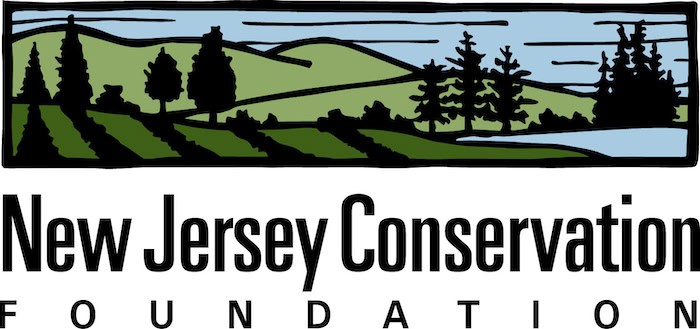By Jay Watson
Harriet Tubman is legendary for her intelligence, sense of justice and, above all, extreme courage in repeatedly risking her life to help some 70 people escape slavery.
What else did it take for Tubman to lead her charges hundreds of miles to freedom in the 1850s while eluding capture? Exceptional outdoor skills.
Some historians consider Tubman the “ultimate outdoorswoman” for her ability to navigate using the stars, forage wild plants for food and medicine, and use trails and waterways as hidden travel routes. She even used bird calls, especially those of the barred owl, to secretly communicate with those she rescued.
Tubman’s skills as an outdoor survivalist and guide were recently recounted in a fascinating webinar co-sponsored by the Nature Conservancy and the Harriet Tubman Museum of New Jersey in Cape May. The event was held in celebration of Black History Month and the 200th anniversary of Tubman’s birth.
“Harriet Tubman was a conductor on the Underground Railroad and she never lost a passenger,” noted Ras Hebron, an ambassador and historic interpreter at the museum. “She took pride in her ability as a conductor. She also went by the name of Moses; that was her ‘nom de guerre.’ ”
“She really knew the land,” added Cynthia Mullock, executive director of the museum. “When she was enslaved, she was working on that land.”
Tubman was born Araminta Ross in 1822 on Maryland’s Eastern Shore, one of nine children of Harriet Green and Benjamin Ross.
For her first 27 years she was enslaved to a planter who owned woodlands; she helped harvest timber in those woods. She is also believed to have learned about wild plants and navigating forests from her father.
Although enslaved people were not legally allowed to marry, she entered into a union in 1844 with John Tubman, a free Black man. She took on his last name and her mother’s first name.
She escaped enslavement in 1849 with two of her brothers. Using her outdoor skills and connections in various communities, Tubman made her way to Philadelphia, a Quaker-influenced city with abolitionists willing to help her.
Tubman discovered, however, that gaining her own freedom was not enough.
As she later told her biographer, Sarah H. Bradford, “I was free, but there was no one to welcome me to the land of freedom. I was a stranger in a strange land; and my home, after all, was down in Maryland; because my father, my mother, my brothers, and sisters, and friends were there. But I was free and they should be free.”
Tubman returned to Maryland an estimated 13 times and liberated about 70 people, including her parents, other family members and friends. She led those under her care all the way to Canada, where the U.S. Slave Fugitive Act was not recognized, using the North Star as a guide.
Her success led slaveholders to post a $40,000 bounty for her capture dead or alive; the equivalent of about $250,000 today. Despite the grave danger, she persisted in her missions and was never caught.
Tubman’s main connection to New Jersey was working as a domestic laborer and cook in Cape May hotels and private homes during the early 1850s to earn money to finance her missions.
Cape May was known as a center of Black activity during that era, as the town was one of the few resorts where people of color were welcomed.
To commemorate Tubman’s connection with this state we’re in, the Harriet Tubman Museum of New Jersey was established in the former parsonage next to the Macedonia Baptist Church in Cape May.
The museum opened to the public on June 19, 2021 – the holiday known as Juneteenth, celebrating the end of slavery in the United States.
The creation of the Harriet Tubman Museum highlights the need to preserve and interpret other African American history sites throughout New Jersey and the nation. Here are a few others worth learning about:
• Dr. James Still Office Historic Site, Medford – Dr. James Still was known as “The Black Doctor of the Pines” for his renowned knowledge of herbalism and homeopathic medicine. He was also a noted historian and Underground Railroad operative.
James Still’s brother, William Still, compiled more than 800 accounts of formerly enslaved people for his book, “The Underground Railroad.”
Dr. Still’s office is now maintained as a historic site. For more information, go to www.drjamesstillcenter.org/
• Stoutsburg Sourland African American Museum, Skillman – Located in the historic 120-year-old Mount Zion African Methodist Episcopal Church, this museum is dedicated to telling the story of the unique culture, experiences and contributions of the African American community in the Sourlands, a mountainous region in central New Jersey.
Learn about the museum at www.ssaamuseum.org/
• Marshalltown, Mannington Township – New preservation efforts are emerging to focus on the historic Black settlement of Marshalltown, which rose and fell between 1834 and 1951.
This location offered great soils for farming and provided abundant wildlife and access to meadows, creeks and waterways. Its name honors Thomas Marshall, a successful Black farmer, churchman and storekeeper who was a leader in promoting land ownership by people of color.
Visit their Facebook page at www.facebook.com/groups/MarshalltownNJ
• Timbuctoo, Westampton Township – Timbuctoo is an unincorporated community settled by formerly enslaved and free African Americans, beginning in 1826. The only visible remnant of Timbuctoo’s historic past is the Timbuctoo Cemetery in Burlington County.
Go to https://timbuctoonj.com/ for more information.
Visit the Harriet Tubman Museum of New Jersey at www.harriettubmanmuseum.org/ or visit the museum’s Facebook page at www.facebook.com/harriettubmanmuseum
Jay Watson is a co-executive director of the New Jersey Conservation Foundation, Far Hills. He may be reached at [email protected]

